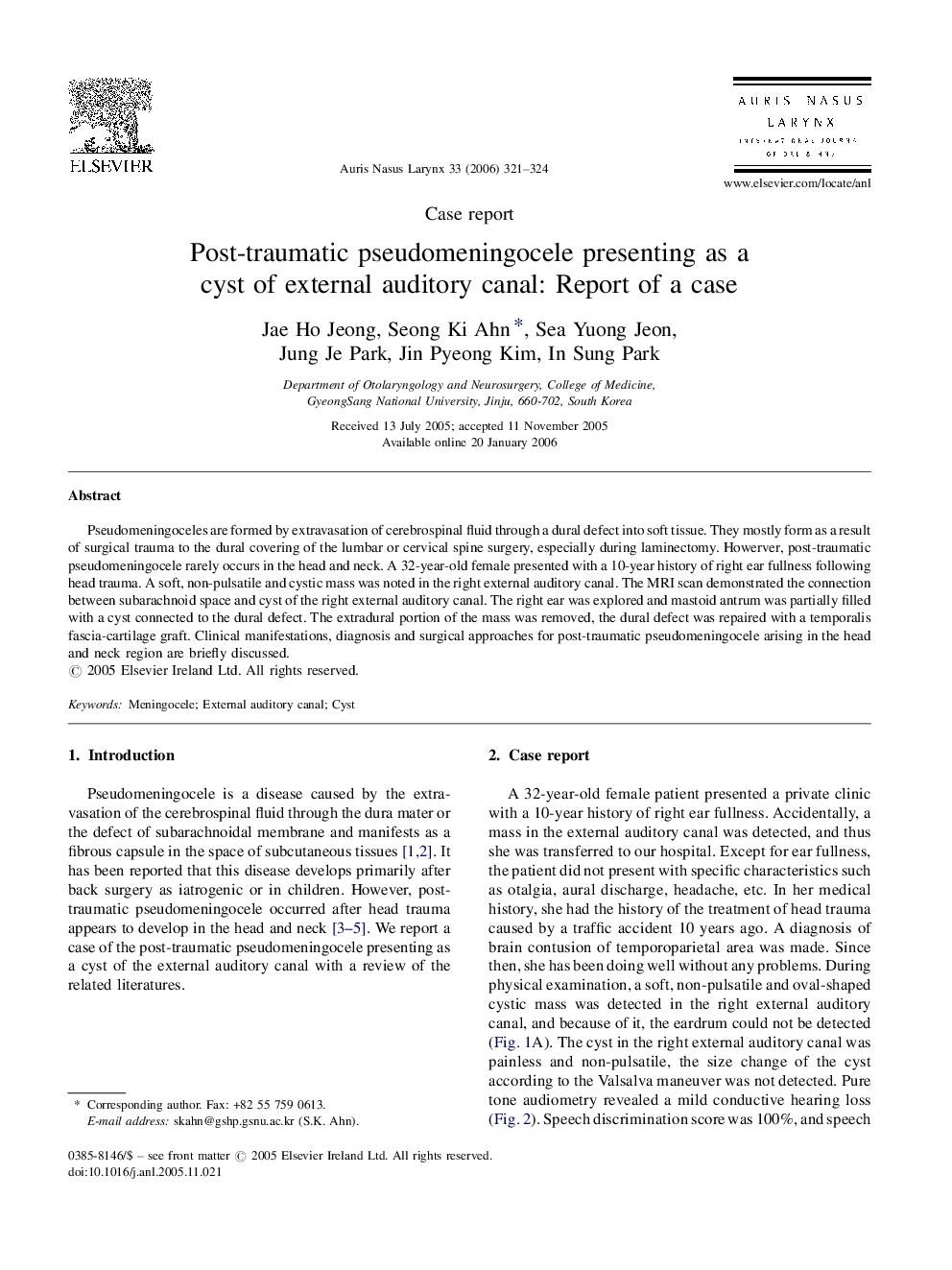| Article ID | Journal | Published Year | Pages | File Type |
|---|---|---|---|---|
| 8756995 | Auris Nasus Larynx | 2006 | 4 Pages |
Abstract
Pseudomeningoceles are formed by extravasation of cerebrospinal fluid through a dural defect into soft tissue. They mostly form as a result of surgical trauma to the dural covering of the lumbar or cervical spine surgery, especially during laminectomy. Howerver, post-traumatic pseudomeningocele rarely occurs in the head and neck. A 32-year-old female presented with a 10-year history of right ear fullness following head trauma. A soft, non-pulsatile and cystic mass was noted in the right external auditory canal. The MRI scan demonstrated the connection between subarachnoid space and cyst of the right external auditory canal. The right ear was explored and mastoid antrum was partially filled with a cyst connected to the dural defect. The extradural portion of the mass was removed, the dural defect was repaired with a temporalis fascia-cartilage graft. Clinical manifestations, diagnosis and surgical approaches for post-traumatic pseudomeningocele arising in the head and neck region are briefly discussed.
Related Topics
Health Sciences
Medicine and Dentistry
Medicine and Dentistry (General)
Authors
Jae Ho Jeong, Seong Ki Ahn, Sea Yuong Jeon, Jung Je Park, Jin Pyeong Kim, In Sung Park,
